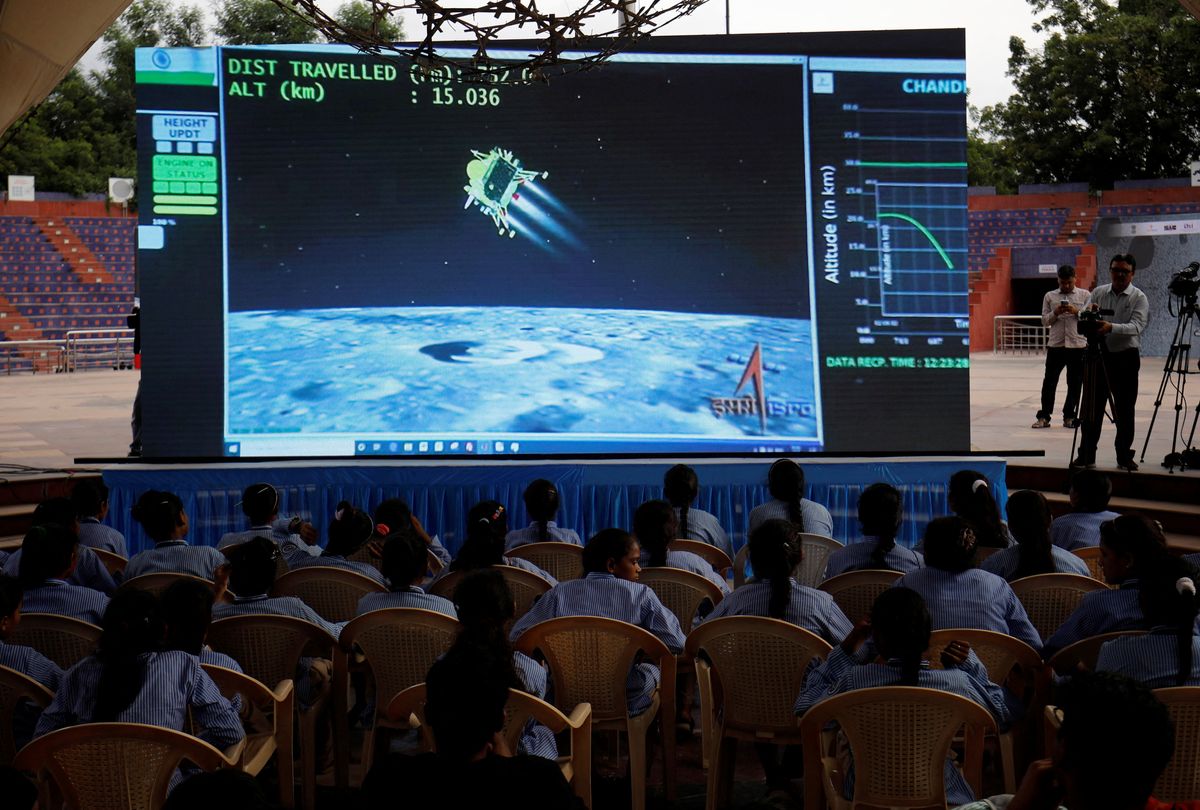India makes history with Chandrayaan-3's moon landing
India has hit a major milestone – its Chandrayaan-3 spacecraft aced a soft landing close to the moon's south pole.

A few minutes every morning is all you need.
Stay up to date on the world's Headlines and Human Stories. It's fun, it's factual, it's fluff-free.
The backstory: Let's talk moon missions. The old Soviet Union, the US and China have already made their mark with soft landings on the moon. But their focus has mostly been around the moon's equator. The US had the very first crewed mission to the moon, with astronauts actually walking on the surface in 1969. China has stood out since 2013, with the successful landing of the Chang'e 3 mission that deployed the Yutu ("Jade Rabbit") rover on the region known as the "Bay of Rainbows" and even accomplishing a landing on the far side of the moon in 2019 with the Chang'e 4 mission.
Japan's space agency, JAXA, is gearing up for a launch this month, while in the US, NASA's ambitious Artemis III program is targeting 2025 for a human-crewed lunar mission. As you can imagine, a moon landing is no small feat. For instance, India took its shot with Chandrayaan-2 in 2019, unfortunately losing communication with the lander. And there've been a couple of missteps recently, including Israel's 2019 crash and Japan's presumed crash landing in April.
India, the world's most populated country, is determined to make an impact with its space program. The nation is not going at it alone – it’s teamed up with the US, Russia and France in the field of space exploration with a bustling exploratory program. It’s even part of the US Artemis Accords, which is basically a set of principles and guidelines for space exploration.
More recently: Just last week, Russia made a significant lunar attempt after almost 50 years. It aimed for a landing near the moon's south pole with its Luna-25 spacecraft. Unfortunately, things went south, leading to a crash landing. Russia's space agency, Roscosmos, pointed to the mission's failure due to the long gap in lunar missions since its last moon mission back in 1976.
The development: India has hit a major milestone – its Chandrayaan-3 spacecraft aced a soft landing close to the moon's south pole. The whole country was buzzing with excitement, with millions tuning in to witness the launch and landing online. India now joins the ranks of the US, China and the former Soviet Union as the fourth country to accomplish a successful soft landing on the moon.
India also chose a landing spot closer to the moon's south pole, making it the first country to land in that region. Why? Scientists speculate that this area might contain valuable water ice deposits, a potential resource for future missions. That ice could be turned into fuel for rockets or even drinking water.
Prime Minister Narendra Modi caught the action remotely from the BRICS summit in South Africa, while Chandrayaan-3 captured captivating images as it approached the moon. The Indian Space Research Organisation (ISRO) confirmed that both the lander and rover are in optimal condition, although further experiments are in the pipeline.
Key comments:
“On this joyous occasion … I would like to address all the people of the world,” said Indian Prime Minister Narendra Modi. “India’s successful moon mission is not just India’s alone. This is a year in which the world is witnessing India’s G20 presidency. Our approach of one Earth, one family, one future is resonating across the globe. This human-centric approach that we present and we represent has been welcome universally. Our moon mission is also based on the same human-centric approach. Therefore, this success belongs to all of humanity, and it will help moon missions by other countries in the future.”
“There is no doubt that landing on the Moon is a real challenge,” said NASA Administrator Bill Nelson in a statement on Sunday. “But the Moon offers great scientific reward, which is why we’ve seen so many recent attempts to visit the surface again. We’re looking forward to all that we will learn in the future, including from India’s Chandraayan-3 mission.”




Comments ()